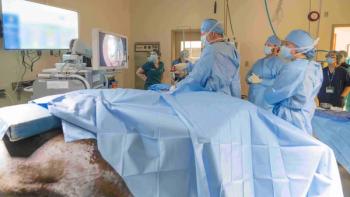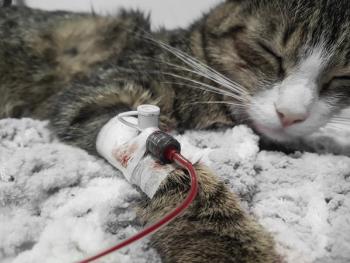
Getting practical: Managing cranial cruciate ligament injuries in practice (Proceedings)
Cranial cruciate ligament injuries are some of the most common orthopedic conditions seen in small animal practice. Even so, the optimal treatment modality is hotly debated within the profession. Each new surgery is introduced with great fanfare but, in most clinical studies, the fabellar suture technique in one iteration or another has been found to be superior or equal to other methods.
Cranial cruciate ligament injuries are some of the most common orthopedic conditions seen in small animal practice. Even so, the optimal treatment modality is hotly debated within the profession. Each new surgery is introduced with great fanfare but, in most clinical studies, the fabellar suture technique in one iteration or another has been found to be superior or equal to other methods. From the client's perspective, a technique that could be performed locally and at a minimal cost is optimal if the results meet the expectations of that client for their pet.
This session will work through the lateral suture technique in a step-by-step manner. The audience should already have some idea of the general diagnostic work-up and case selection. The presentation will review the lateral arthrotomy, visualization and management of the medial meniscus, joint capsule imbrication, identification of isometric points, proper placement of the lateral suture with and without crimp clamps, and closure. Some discussion of post-operative care and rehabilitation will follow.
Technique
The stifle can be approached through either a medial or a lateral skin incision; I prefer the lateral approach because the medial approach is more time consuming and involves the creation of more dead space. Concerns about visible scars can be addressed through careful technique. A standard para-patellar approach to the stifle should then be performed. Although opening the joint has become controversial, I believe an arthrotomy is important to properly evaluate the meniscus and also allows some imbrication of the joint capsule. As with many surgeries, proper visualization and access will make this operation much easier.
During the approach, the surgeon should avoid incising musculature and therefore decrease bleeding and post-operative morbidity. An initial stab incision can be made through the fascia lata and the joint capsule but then the incisions in those layers should be extended separately. The fascia lata incision can be extended proximally and distally without incising muscle if the proper layer has been located. The joint capsule incision should be extended caudo-proximally toward the fabella. At this point, the patella can be luxated medially and the interior of the joint can be inspected. The joint capsule can be imbricated during closure, but this is not crucial. Care should be taken to avoid lateral patellar luxation caused by excessive imbrication.
Meniscal injuries will primarily involve the medial meniscus, although both menisci should be inspected. Damaged portions of the meniscus should be resected and the remainder left in place. I do not perform a meniscal release when doing fabellar suture procedures, although some surgeons do.
The placement and tying of the suture has received a great deal of attention and is critical to a successful outcome. Either a crimping device or a slipknot technique can be used, and both are appropriate. The crimping device has been shown to be slightly more secure, but this may not be clinically important. Anecdotally, I have noted more instances of failed crimp sutures, but this may not be a direct criticism of the method. Of vital importance is correct placement of the suture and correct tension. Placement of the suture should result in it replicating the natural angle of the original ligament as closely as possible even thought perfect biomechanics are probably not possible. The suture should run under the cranial tibial muscle to avoid morbidity associated with crushing of this muscle. The cranial cruciate ligament is largely a passive restraint, so excessive tension on the fabellar suture is unnecessary and can cause increased pain. Tension beyond that required to eliminate drawer will merely result in increased pain and stress on the fabella, although the trade-off is that some loosening invariably occurs. Before closing the fascia lata, I will carefully inspect the knot of the fabellar suture. If the knot appears to stand up, use a small suture (2-0 or 3-0) to tie it down thus decreasing irritation to the biceps.
Post-operative care
The post-operative management of these cases involves pain control as well as short- and longer-term rehabilitation. Management of pain should involve the use of epidural analgesics (morphine and/or bupivicaine) and/or the use of intra-articular analgesics (bupivicaine). Additionally, the patients should be monitored carefully for discomfort during the first 12-24 hours of recovery in case changes to the analgesic protocol are necessary. Oral analgesics can be started the day after surgery and should be continued for two weeks. Proper pain management will promote healing by decreasing stress and will make the animal more amenable to rehabilitation.
Newsletter
From exam room tips to practice management insights, get trusted veterinary news delivered straight to your inbox—subscribe to dvm360.




